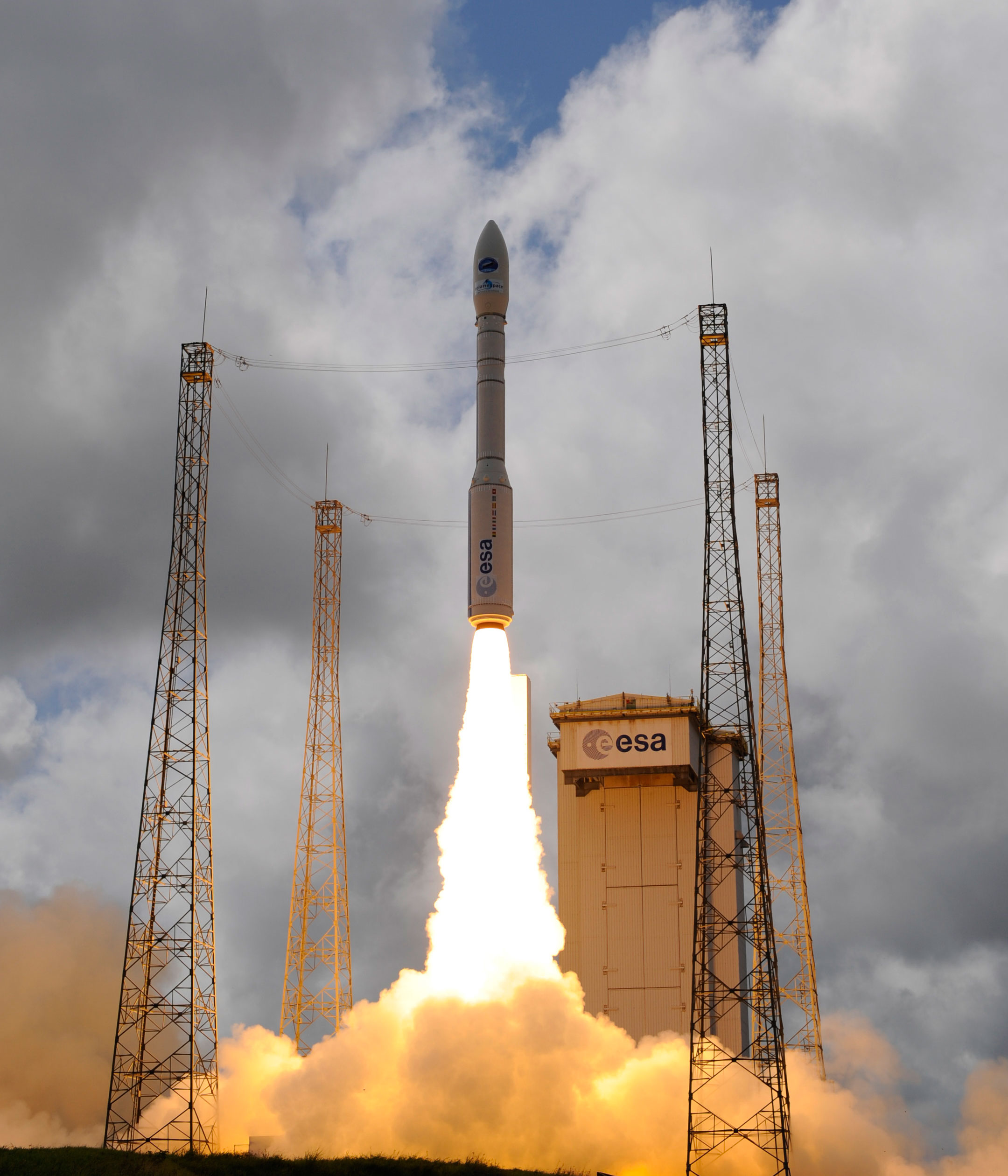
An experimental vehicle to develop an autonomous European reentry capability has completed its mission. ESA’s Intermediate eXperimental Vehicle flew a flawless reentry and splashed down in the Pacific Ocean just west of the Galapagos islands.
The IXV spaceplane lifted off at 13:40 GMT (10:40 local time) on 11 February from Europe’s Spaceport in Kourou, French Guiana atop a Vega rocket. It separated from Vega at an altitude of 348 km and continued up to 413 km. Reentering from this suborbital path, it recorded data from more than 300 advanced and conventional sensors.
As it descended, the five-metre-long, two-tonne craft manoeuvred to decelerate from hypersonic to supersonic speed. The entry speed of 7.5 km/s at an altitude of 120 km created the same conditions as those for a vehicle returning from low Earth orbit.
IXV glided through the atmosphere before parachutes deployed to slow the descent further for a safe splashdown in the Pacific Ocean. Balloons kept IXV afloat while the recovery vessel hurried to pick it up.


This article appeared in the 10th issue of RocketSTEM.
Download PDF Issuu Reader Buy Print Edition



